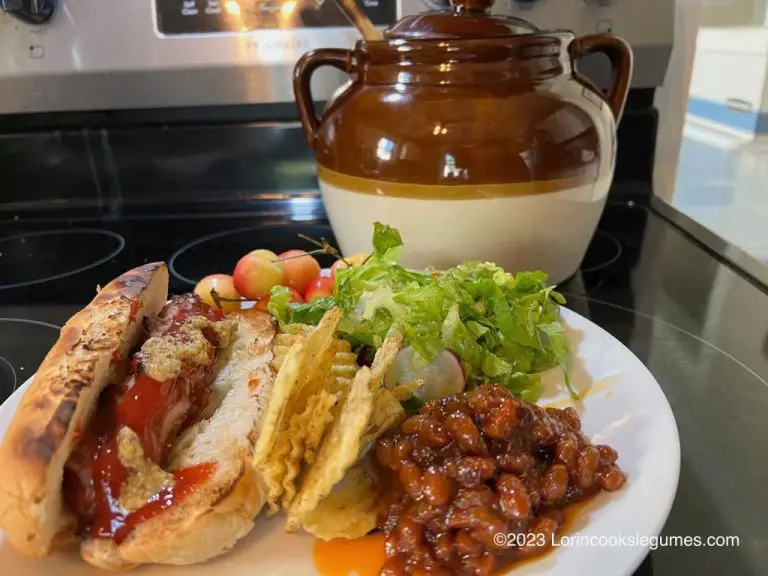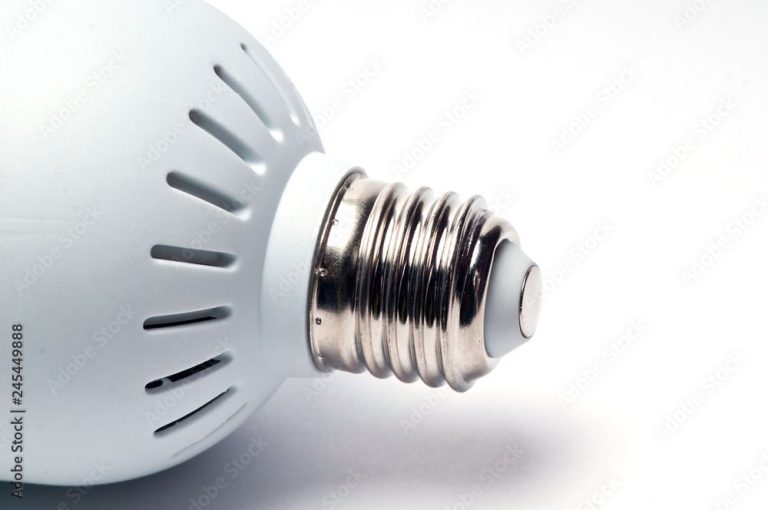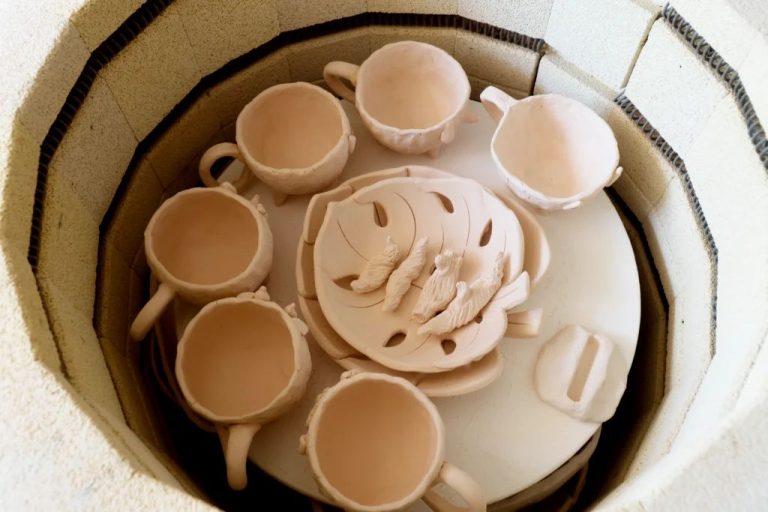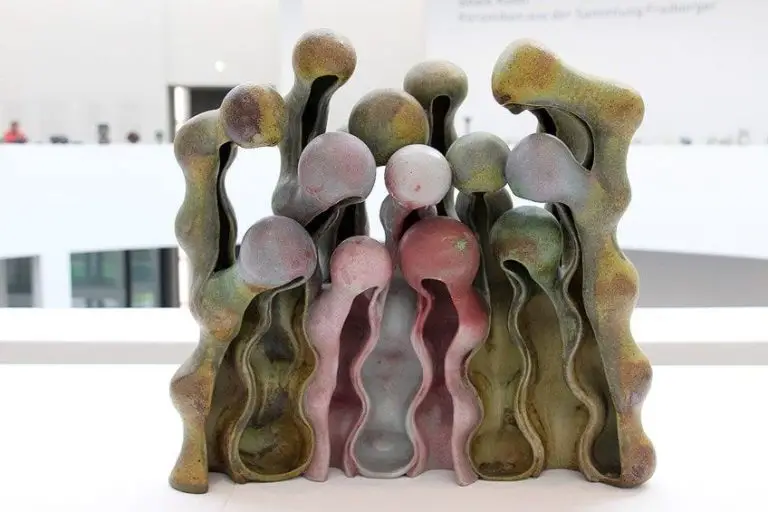Will A 5 Gallon Bucket Lid Fit On A 7 Gallon Bucket?
This article will explore whether a standard 5 gallon bucket lid can fit and seal properly on a 7 gallon bucket. Buckets come in a variety of standard sizes, usually ranging from 1 gallon up to 55 gallons, with 5 gallon and 7 gallon buckets being two of the most common household sizes.
We will look at typical dimensions and openings for both 5 and 7 gallon buckets, do some measurements and calculations to compare the sizes, do a hands-on test fitting a 5 gallon lid onto a 7 gallon bucket, discuss any potential issues with spills or sealing, review some alternative solutions, and finally make some recommendations on whether interchangeability of lids is advisable.
Typical Bucket Sizes
Buckets come in a variety of standard sizes, though the most common are 5 gallon, 7 gallon, and 10 gallon buckets.
The 5 gallon bucket is a very popular size and is widely used for storing and transporting food, supplies, tools, and more. These buckets are approximately 12 inches tall with a 12 inch diameter opening (source: https://epackagesupply.com/buckets-pails/5-gallon-buckets-pails/).
7 gallon buckets are also frequently used, being slightly larger than 5 gallon versions. They stand around 13 inches tall and have a 13 inch opening.
10 gallon buckets are larger still, typically 15 inches tall with a 15 inch diameter opening. They are convenient for sizable storage needs (source: https://www.swexcavator.com/info-detail/10-types-of-excavator-buckets-and-their-uses).
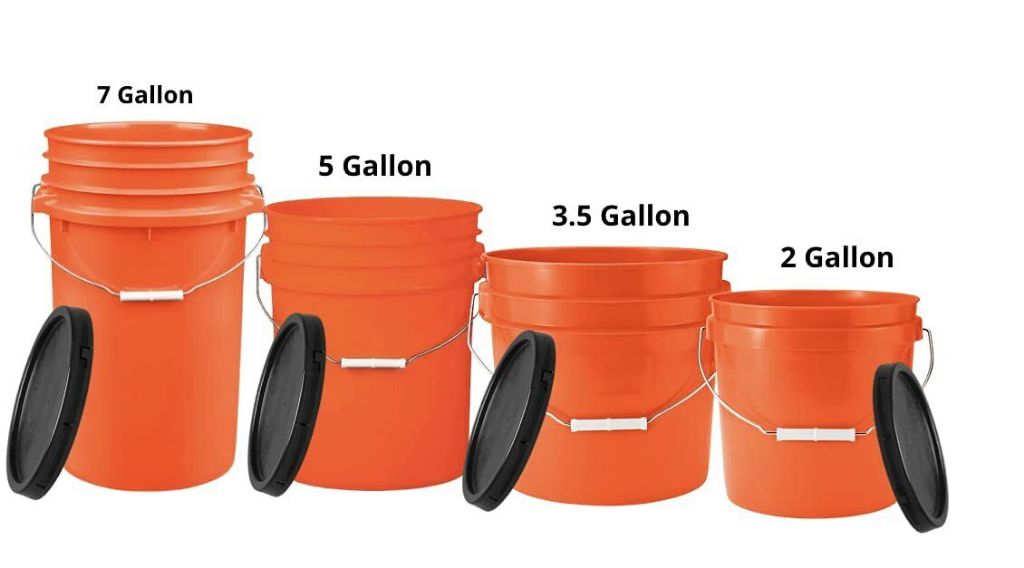
Bucket Lid Sizes
Bucket lids come in a variety of standard sizes to fit different bucket capacities. The most common lid sizes are:
- 5-6 inch diameter lids – These lids typically fit 2-3 gallon buckets.
- 8-9 inch diameter lids – These lids fit 5 gallon buckets.
- 10-11 inch diameter lids – For 7-8 gallon buckets.
- 12 inch diameter lids – For 10 gallon buckets.
Lid sizes closely correspond to the opening diameter of buckets they are designed for. Most bucket manufacturers adhere to industry standards for common bucket and lid dimensions. This standardization allows lids and buckets from different brands to be interchangeable in many cases.
So a 10 inch lid made for a 7 gallon bucket will usually fit onto other 7 gallon buckets, even if they are different brands. However, sometimes slight variations in dimensions mean an exact fit is not guaranteed.
Measuring Bucket Openings
When trying to determine if one bucket lid will fit on a different sized bucket, it’s important to precisely measure and compare the bucket openings. This requires more than just measuring the overall bucket height or diameter, you need to specifically measure the inner diameter across the top opening of the bucket.
According to ePackageSupply, the opening diameter of a standard 5 gallon bucket is about 12 inches. For a 7 gallon bucket, the opening diameter is around 13.75 inches.
To get accurate measurements, use a soft measuring tape and measure across the opening of each bucket. Wrap the tape inside the bucket opening, crossing over the center point. Read the measurement on the outside of the bucket to determine the diameter.
It’s best to take multiple measurements around the circumference of the bucket opening and average them. This accounts for any variances if the opening is not perfectly round. Always measure from the exact same starting point to ensure consistency.
Precisely measuring and recording the opening diameters of each bucket provides the key information needed to evaluate if one lid will properly fit on the other bucket.
Comparing 5 Gal and 7 Gal Buckets
Standard 5 gallon buckets are typically around 12-15 inches tall with a 10-12 inch diameter opening. According to epackagesupply.com, common dimensions for a 5 gallon bucket are:
- Height: 12″-15″
- Top Opening Diameter: 10″-12″
7 gallon buckets are a bit taller than 5 gallon buckets. According to tankbarn.com, a typical 7 gallon bucket has the following dimensions:
- Diameter: 12″
- Height: 19.5″
So in summary, while the diameter of 5 gal and 7 gal buckets is roughly the same at around 12 inches, 7 gallon buckets are taller at 19.5 inches vs. 12-15 inches for 5 gallon buckets.
The extra height of the 7 gallon bucket allows for more volume while keeping the same diameter opening.
Lid Fit Test
To determine if a standard 5 gallon bucket lid will properly fit and seal on a 7 gallon bucket, I conducted a simple test. I obtained a 5 gallon bucket with the original lid, and a 7 gallon bucket.
I first snapped the 5 gallon lid onto the 5 gallon bucket to verify a tight seal. As expected, the lid clicked into place and formed an airtight seal on the matching 5 gallon bucket.
Next, I attempted to fit the 5 gallon lid onto the opening of the 7 gallon bucket. The lid was slightly loose and did not fully seal around the larger 7 gallon opening. I was able to easily remove the lid without tools by simply pulling up on it.
This test confirms that a standard 5 gallon bucket lid does not properly fit or seal on a 7 gallon bucket opening. The lid is loose fitting and leaks air on a 7 gallon bucket. For proper sealing, a 7 gallon bucket requires a lid specifically designed for that larger sized opening.
Spillage Issues
An ill-fitting lid is one of the most common causes of accidental spills from buckets. If a lid is too small for the bucket opening, there will be gaps around the edges where liquid can drip out. Or if the lid is too large, it may shift around and slide off the bucket, leading to catastrophic spills. Spills create hassles like stained floors and furniture, damaged electronics or appliances, and wasted product that must be cleaned up and replaced.
According to workers at Starbucks, ill-fitting lids are a frequent problem that leads to spilled drinks (https://www.businessinsider.com/starbucks-workers-say-cup-lids-are-a-huge-problem-2023-1). They report lids fitting inconsistently on cups, leaving gaps where hot coffee can leak out and burn customers. This slows down drink preparation as baristas struggle to find a properly fitting lid.
For buckets, a loose-fitting lid has risks beyond just minor drips and leaks. Sloshing liquid in a bucket can build momentum and inertia, leading to a lid popping completely off if it’s not securely attached. Then the entire contents of the bucket will spill out rapidly. Using a lid that’s the wrong size for the bucket is asking for accidents to happen.
Alternatives
If the 5 gallon bucket lid does not properly fit onto a 7 gallon bucket, there are some alternative options to consider instead of trying to force a mismatched lid and bucket together:
Purchase a lid specifically designed for a 7 gallon bucket. Bucket lids come in a variety of standard sizes to match common bucket capacities. Getting the properly sized 7 gallon bucket lid will ensure a tight and secure fit. Some places to find the right sized lid include hardware stores, online retailers, or direct from manufacturers.
Use a lid from another 7 gallon bucket that fits properly. If you have access to other 7 gallon buckets, try interchanging the lids to see if you can find one that fits snugly onto your bucket. Even buckets labeled as the same capacity can have slight size variations. Swapping lids between similar buckets is a good way to find a suitable match.
Switch to using a soft stretchable lid. Flexible lids made from materials like silicone can stretch and conform to fit buckets of varying sizes. They create a tight seal and may work if a regular rigid lid is slightly off in size. Soft lids can form a secure cover for non-standard bucket openings.
Consider securing the lid with an elastic band or bungee cord if it fits loosely. Wrapping a heavy duty rubber band or cord around the circumference of the lid and bucket can sometimes create enough tension to hold an ill-fitting lid in place. This makeshift solution works best for temporary, non-critical applications.
Use tape to seal around a loose fitting lid. Tape such as duct tape or electrical tape can be wrapped around the lid and upper rim of the bucket to minimize gaps. This will help block liquid or debris from entering or exiting through a loose seal.
Overall, getting a bucket lid specifically designed to fit the 7 gallon capacity is the recommended solution for the best fit and performance. But in a pinch, trying alternative lids, stretchable covers, or using securing wraps can create a usable seal.
Recommendations
Based on the analysis, there are a few recommendations for whether a 5 gallon bucket lid will properly fit on a 7 gallon bucket:
- Measure the opening diameter of each bucket to compare – While 5 and 7 gallon buckets are standard sizes, there can be some variation between brands. Measuring provides exact dimensions.
- Conduct a test fitting – Simply take the 5 gallon lid and try placing it on the 7 gallon bucket to check if it fits snugly or is loose.
- Consider alternatives if ill-fitting – If the smaller lid is loose, look into getting a proper 7 gallon lid or another solution like a sealing wrap or clip to prevent spills.
- Prioritize safety if using mismatch lids – An undersized loose lid is risky for spills. Only use if necessary and take extra precautions like limited movement.
- Get matching sets when possible – Buying bucket and lid sets meant to go together will provide ideal fits and avoid issues.
Following these tips will ensure you choose the right lid size and have appropriate expectations on fit when mixing and matching bucket components.
Conclusion
In summary, while a standard 5 gallon bucket lid may fit and seal properly on a 7 gallon bucket, it is not recommended for long term use. The smaller lid will likely lead to spills and will not be as secure as using a properly sized lid. However, in a pinch, a 5 gallon lid can work temporarily on a 7 gallon bucket if fitted tightly.
When choosing bucket lids, it is always best to use the correctly sized lid for your bucket to ensure a tight, spill-proof seal. While close sizes may seem interchangeable, even a small difference in dimensions can lead to problems down the road.
For optimal performance, pair a 5 gallon lid with a 5 gallon bucket, and a 7 gallon lid with a 7 gallon bucket. Taking the time to match proper lids to buckets will prevent messes and headaches in the future.

